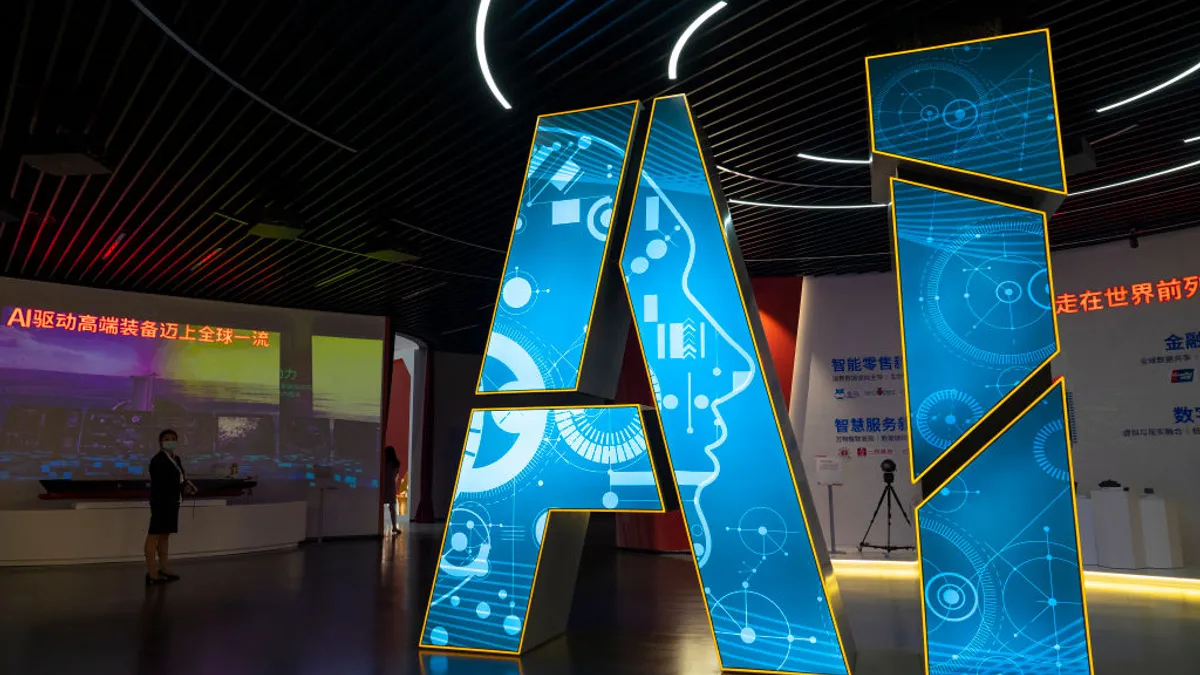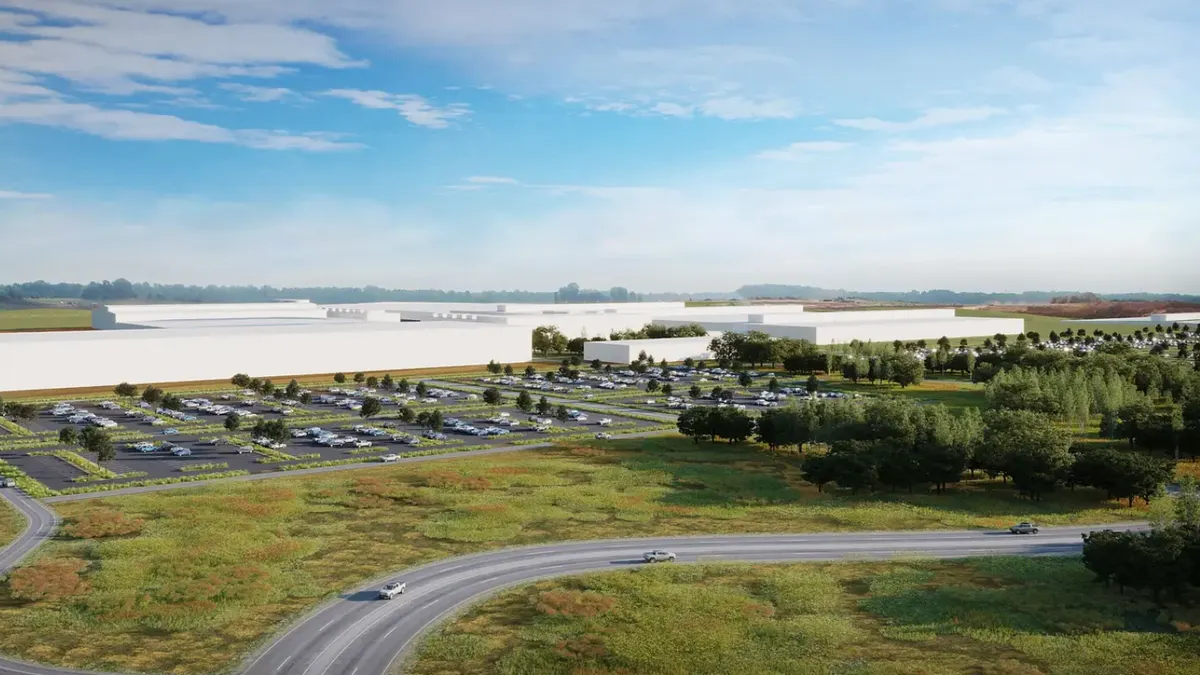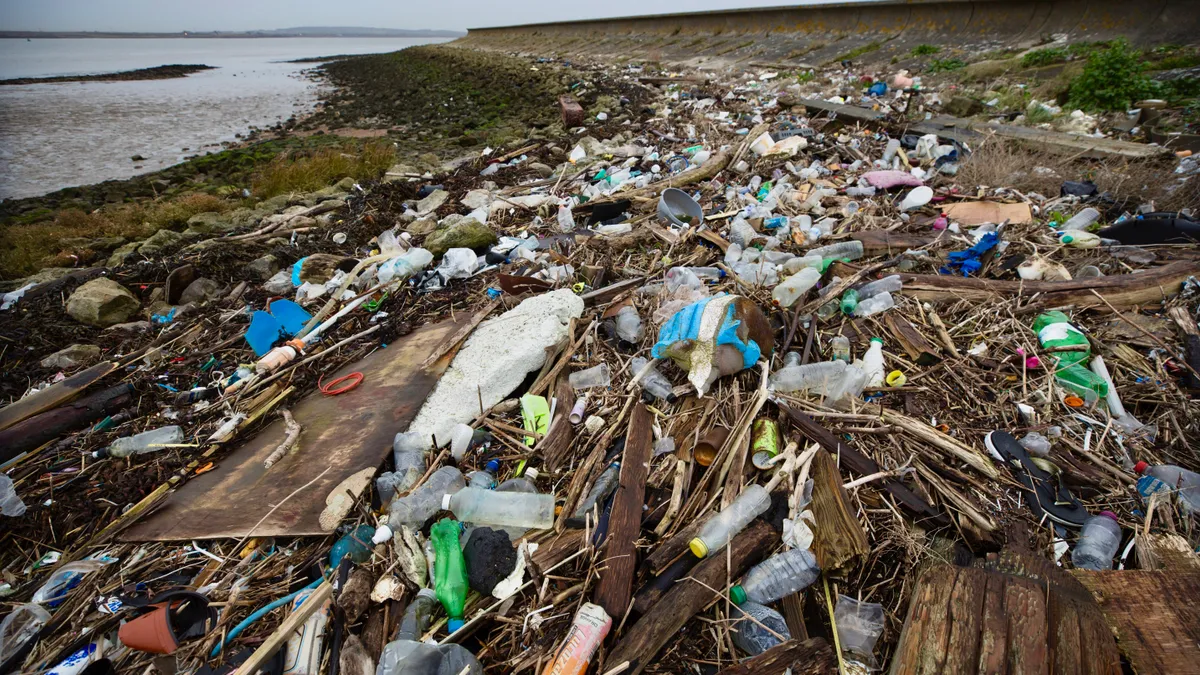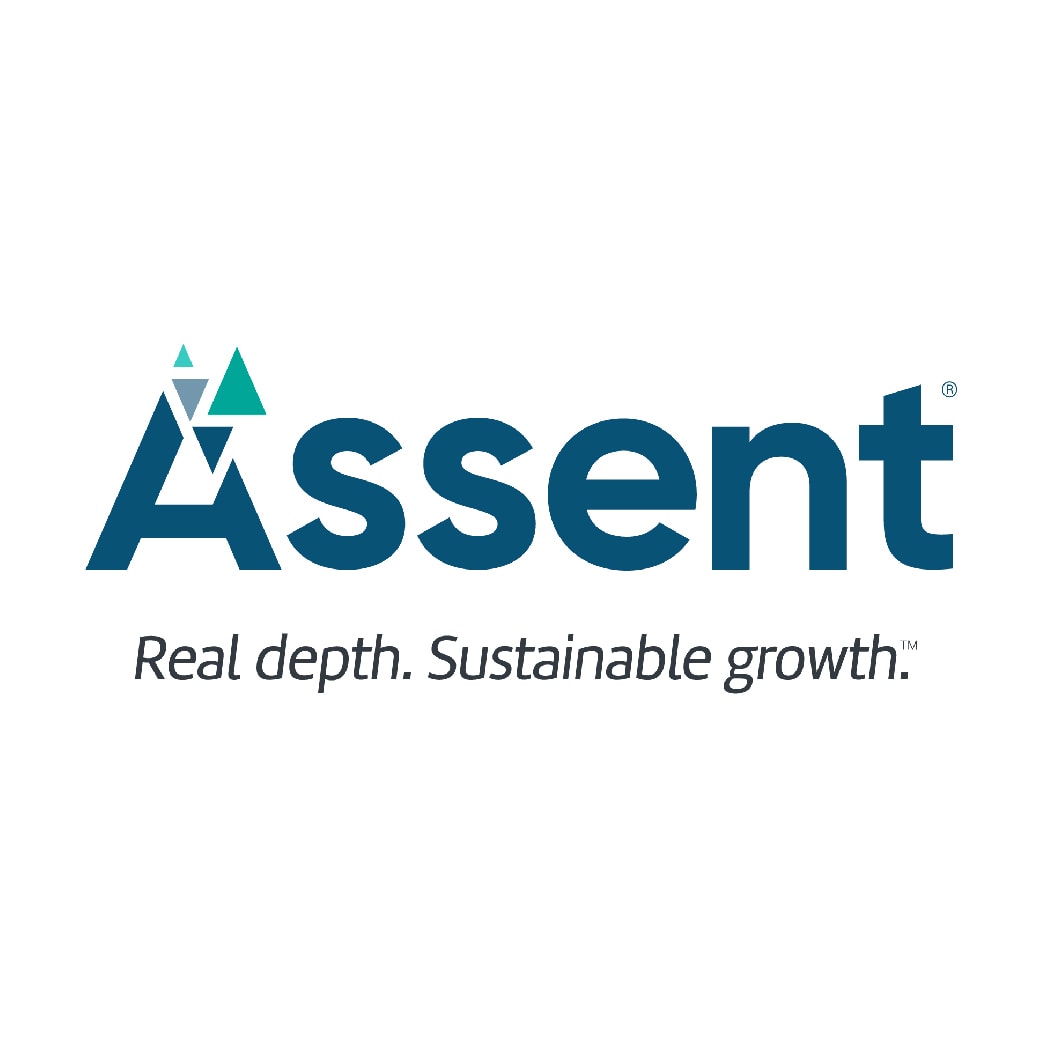As artificial intelligence adoption has increased over the past few years, companies have increasingly turned to the technology to aid their sustainability and ESG goals. While that has also required grappling with the computing power needed by AI, KPMG’s U.S. ESG Lead Maura Hodge said the audit, tax and advisory company has also identified beneficial AI use cases for company chief sustainability officers.
Hodge previously led KPMG’s U.S. sustainability reporting services and its ESG audit practices before being promoted in October 2024. In insights shared exclusively with ESG Dive, the sustainability head said CSOs can leverage AI solutions to reduce their environmental impact, manage and report on sustainability data and use the technology to forecast trends and design sustainability-focused products and services.
“We are committed to leveraging AI for sustainability while mitigating its environmental impacts and looking to be innovative in the ways that we can do that and how we can help our clients do that,” Hodge said in an interview.
The regulatory landscape for sustainability reporting has changed quite a bit this year. The U.S. Securities and Exchange Commission abandoned defense of its climate-risk disclosure rule in court in March and the European Union moved to simplify its corporate sustainability disclosures and supply chain due diligence laws within the past few months. However, there are still opportunities for companies to use AI to advance their sustainability objectives, according to Hodge.
Editor’s note: This interview has been edited for length and clarity.
ESG DIVE: Tell me how you’re adjusting to the new role and what you’re focusing on this year?
MAURA HODGE: It's been somewhat of an extension of what I've been doing for quite a while now. I've worked on sustainability reporting and assurance [at KPMG] since 2010, and I have been leading sustainability for our audit practice since 2021. Given [the scope of that prior] role and the amount that I was working with clients, it really kind of expanded into a number of other areas. So, it was kind of a natural shift for me to take on more, broader responsibilities.
Overall, it's been good. I’ve been managing through the elections and the new administration, and so, therefore, the impact on the SEC climate rules. And now, with the omnibus coming out of the European Union and just different shifts in policy around the globe, it's really exciting to be able to follow all these things and see how they kind of align with what our clients need from us and how we're going to serve them.
I've been just really encouraged to see all the great work that a lot of companies are doing. Sometimes that gets lost in the in the shuffle in some of the the larger debates, but there's a lot of just really interesting programs going on and ways that large corporations are investing in sustainability and biodiversity, and their workforce, and all of the things that I think the ESG kind of movement was bringing up. It's just really important that companies are continuing to tell their story, but in a way that is fair and balanced and accurately and represents what it is that they're doing and how they're making progress.
How have the shifts at the SEC and EU omnibus changes — as well as the new administration — affected your conversations with clients?
Up until recently, a lot of the conversation has been, “How do we get to compliance?” It's very much a compliance mindset [of], “We have these rules we have to follow, therefore, how are we going to get there?”
But one thing that we've been trying to remind them, as they've been going through this process, is that the reason companies are doing this is because it's good for their business, and it brings value in ways, either through risk mitigation or new opportunities.
So, I think that the shift in the regulatory landscape actually allows companies to focus on all of the things that [they have] learned to prepare to comply with the regulations, like impacts, risks and opportunities identified through double materiality assessments and the policies, actions and targets set as an organization. It gives companies an opportunity to actually clarify these objectives, solidify them and start taking action on them, instead of necessarily being bogged down by all of the details around compliance. And how can [they] accelerate some of that information gathering to help make better information or better decisions, which actually ties nicely into the AI conversations and why we're so bullish on AI and sustainability.
How does sustainability intersect with AI, and how are you all using it with your clients?
There are several areas. First of all, as we think about companies starting to take action and really execute on their plans to decarbonize to reduce their environmental impact, using AI driven analytics really helps provide a lot of those insights.
You can't understand your impact unless you have that data, and largely, historically, that data has only been collected on an annual basis, and therefore it's lagging, and you can’t have those insights in real time.
So, we're seeing AI be implemented to both help accelerate the collection of the information from invoices and then to ultimately analyze that information so that we can see existing patterns. [With that] we can see blips in the radar in terms of how typical operations work, but then also being able to adjust in real time and then project out into the future where we think energy or water consumption will go based off of growth in the in the business, or even potentially changing weather patterns, and help companies optimize their routines and take out costs there.
We will see it hopefully come into play more as companies are starting to analyze their supply chains. This is a huge area under [the European Union’s Corporate Sustainability Due Diligence Directive], but that whole conversation has really just accelerated the discussion around how much visibility do we want in our supply chain, and how do we trace that information?
Then really just helping with managing and reporting sustainability information, whether that's under [the EU’s Corporate Sustainability Reporting Directive] or voluntary reporting as companies go ahead, helping to automate data collection, getting it to where it needs to be in order to do the calculations and then ultimately report that information out.
What has KPMG learned by implementing AI into its own sustainability goals or processes?
One interesting application that we've done for ourselves is we've really struggled — and I think a lot of companies struggle — with figuring out the categorization of purchased goods and services for your scope 3, category one analysis.
So, the idea is that you are basically taking all of the things that you buy as an organization and all of that has [a] carbon footprint associated with it — and how do you match those things up to the calculation that you're going to do for that.
We are using AI to help automate the categorization of that information [and] ensure consistency year-over-year in the way that things are categorized. Then, ultimately, being able to have more insight into our footprint that hopefully will, um influence our purchasing habits going forward. That's like one really exciting thing that we've done internally, where we've built the AI that will also be helpful for our clients.
When it comes to dealing with both the sustainability benefits as well as the energy challenges of AI, how are you advising companies to work through that?
One of the things that we're helping clients think through is — if you are thinking about building new facilities or looking at where your current facilities operate, and in particular around data centers — thinking through all of the implications of that. So not only the fact that we're creating more greenhouse gasses, but then what are the financial aspects of where you're located.
So if you are going to be drawing more heavily on the grid, what are the terms of that? Is there an opportunity to use more renewable energy? Can you tap into other emerging energies, like solar or wind or nuclear, different things like that?
Holistically looking at where those data centers will be placed and the financial aspects around it is one of the areas that we're really pressing into.
Say I was a company looking to integrate AI further into my practices and figure out how we can use this as a company. What would your initial advice be and walk me through that process?
It's understanding what their goals are first of all. So, where are they really leaning in, in terms of looking to reduce their carbon emissions? Or what is on their transition plan in the near term? And then identifying ways that AI might help them actually realize those opportunities.
There's also the opportunity for companies that feel a bit stuck. For a lot of leading companies, a lot of the low hanging fruit has already been taken advantage of. So what is that next area where it's actually really hard to make progress? Maybe because you have a lot of suppliers that you're trying to analyze information for and figure out how to move forward. AI has a really good application there to help you make sense of a lot of information relatively quickly.
Then for CSOs that end up being responsible for the reporting side of things, AI has a lot of applications to help assist with automating that [reporting process], speeding it up, so that they don't have to spend as much time on the data collection, and they can spend more time on the analyzing and the action around it.
What are some of the more innovative ways you've seen companies use AI for sustainability.
Probably around automating the data management of information [like] around energy consumption or water consumption at facilities [and] manufacturing plants, and automatically flagging where and when something seems to be wrong, so that the operators can go in and check and make sure that you don't have a leak or something isn't running when it isn't supposed to.
At our Lake House facility, which is our large training facility in Orlando, we have basic things that are built in to turn off, to increase the heat right, to lower the air conditioning and to automatically shut off the lights when there's no movement in the room after 30 minutes. Automating all of that is a good way to help companies achieve their goals.
But then I would say the supply chain is the next horizon for where AI can really be impactful.
Have you had any issues trying to get companies to shift from a compliance mindset to looking for business opportunities, now that there is less of that immediate regulatory pressure?
It depends on who you're talking to and what the mindset that they came to the conversation with to begin with. And, what I mean by that, is saying there were a lot of accounting and finance folks who have come to the table in the past two years right in order to get ready for regulation. And many of them are doing it because, you know, they want to enhance the quality of the information that is being put out into the public as well as meet their regulations. And they have the skill set to be able to do that, because they've been doing financial reporting for a long time.
But I have seen some companies sort of say, well, we were only going to pull together this information in order to meet the regulations. So, I think there may be some grappling there with all right, we've collected all this data, or we've gotten so far now, what do we do with it? Because maybe we haven't voluntarily reported it in the past. And so should we continue? Should we stop? Or, if we do continue and kind of do a dry run, do we put it out into the public yet? And I think that's where a lot of the discussions are happening right now.
What is your initial take on the regulatory changes in the U.S. and with the EU, and how they'll affect just what companies have to report?
We've been talking a lot about no regrets moves for companies to take, whether they come out of scope altogether [for the EU regulations] or their timeline just gets pushed out. And you still need to do climate [reporting] with the California rules that are out there.
We're seeing several states now. Other states have draft bills and laws with the requirement to disclose scope 1, 2 and 3 greenhouse gas emissions, and understand your climate risk and how you're mitigating those risks. So, companies still need to do that, and they're not kind of backing away from a lot of what they're doing around climate and greenhouse gas.
Beyond that, I think we're seeing companies sort of say, “Okay, actually, this just gives us more breathing room to get it right.” The first time, what we've seen largely is this kind of acceleration of effort to try to get something done in a manual way as quickly as possible in order to comply. Now the delays allow companies to take a step back and instead of saying, “How do I just get this done?”say “How can I do it as efficiently as possible?”
And that's where AI comes in. “What technologies should I be introducing now? How can I automate the pooling of information? Should I be getting this information from other systems?” [Companies are] already collecting it, as opposed to doing it manually, and being more thoughtful about what that roadmap looks like to get to a finalized report.
Anything else?
One of the key things that companies need to do is to continue to engage with the evolving regulatory landscape. A lot of people sort of complain and say, “all this stuff is happening to us, all these regulations are forcing us to do X, Y and Z.” But all of [the regulations] have open comment periods and an ability to participate in shaping what this landscape looks like going forward.
I would just encourage companies to be engaging in that process, so that we get to an answer that is both fairly reflective of what companies are doing and what investors want without going overboard.
One of the challenges that we've had is there's a wide spectrum [of reporting and disclosure requirements]. We've historically done a lot of voluntary reporting, communicating the things that we want to communicate, the good stories. What regulation is doing is it's forcing a structure which feels a bit more onerous. And so how do we get to that happy middle ground where you get the appropriate transparency and accountability while still being able to tell the stories that companies want to tell



















